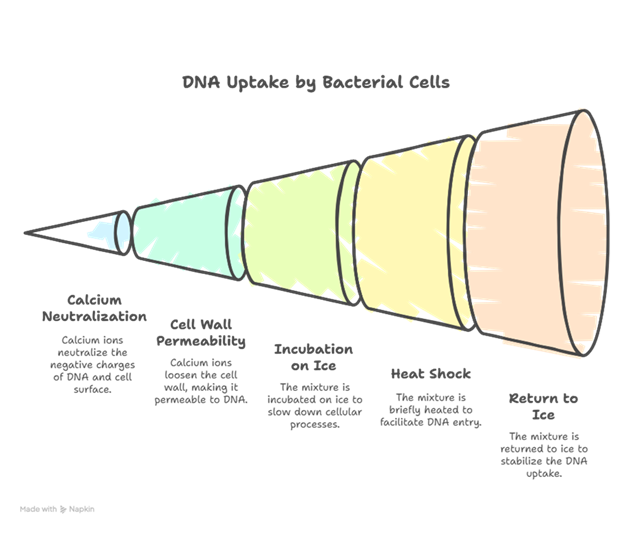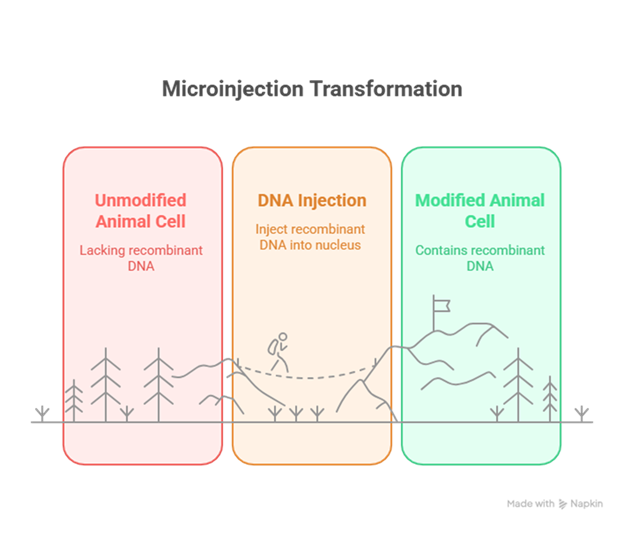How Recombinant DNA (rDNA) is formed?
In order to answer the question, why is making host cells competent, it is essential to first understand the process of rDNA technology (Recombinant DNA Technology). Let’s enlist the processes involved in recombinant DNA technology:
- Isolation of DNA of interest
- Cutting of DNA using restriction enzymes
- Insertion of gene into vector (recombinant DNA formation)
- Introduction of recombinant DNA into host cell (Transformation)
- Selection of transformed cells
- Cloning and expression of the gene
- Harvesting the product
In the above procedure, it is the transformation process where competent host is required. What does it mean? Well, transformation is the process when recombinant DNA (rDNA) is inserted into the host cell. The host cell could be a bacterium. A bacterial cell is surrounded by the cell wall and the cell membrane (made up of phospholipids).
Mechanism of Transformation of rDNA
Since rDNA is a hydrophilic molecule, it cannot pass through the bacterial cell membrane, which is hydrophobic in nature. It is therefore essential for the bacterial cell (host cell) to be made competent so that the hydrophilic rDNA could enter into the host cell without any problem. Now, the question is how to make the host cell competent? There are different ways through which transformation can be achieved successfully. However, two main methods have been discussed below:

- Treating the host cell (bacterial cell) with a specific divalent cation such as calcium: In this method, the bacterial cell is treated with a solution of calcium chloride. It is important to understand that both DNA and the bacterial cell surface carry negative charge. They naturally repel each other. Calcium ions are positively charged and thus neutralize this repulsion, allowing the DNA to come closer to the bacterial surface. Besides, calcium ions help in loosening up the cell wall, making it permeable to DNA. In other words, it increases the efficiency with which DNA enters the bacterium through pores in its cell wall. In the next step, the recombinant DNA along with the bacterium is incubated on ice, followed by placing them at 42 Degree Celsius (heat sock) and then putting them back on ice. This allows bacterium to take up the recombinant DNA.

- Microinjection for animal host cell: In this method recombinant DNA is directly injected into the nucleus of an animal cell with the help of microinjection.
In addition to the above two methods, there is another method called biolistics or gene gun, which is used for plant cells. In this method, host plant cells are bombarded with high velocity micro-particles of gold or tungsten coated with DNA. And the last method uses disarmed pathogen vectors, which when allowed to infect the cell, transfer the recombinant DNA into the host.
